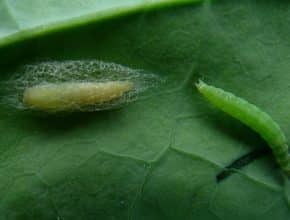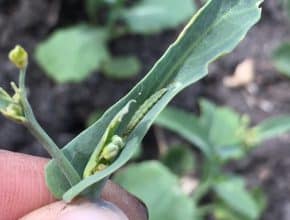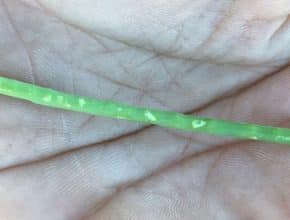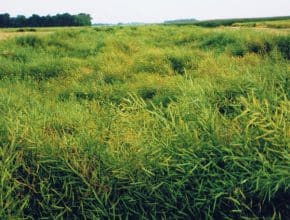Following labels and application rules are always important. A big reason for the rules is to prevent residues on harvested grain. These three questions provide a quick primer…
July 26, 2017 - Issue 18
-
-
-
1. Keep an eye out for insects. The CCC Insect Scouting Guide can help with identifying pest and beneficial insects. Pod damage from insects, including lygus, bertha armyworm and diamondback moth larvae, tends to be the most costly damage at this time of year. That’s because plants well into pod stage are getting out of flowering — and once flowering…
-
The later hail occurs in the season, the more damage it can do to yield. While canola can keep flowering to compensate from hail that occurs during flowering, hail at the late pod stage can result in unrecoverable yield loss. (The damage to the pod in this photo is minor but could still affect yield if seeds are damaged or…
-
1. Green and bendable canola stems can often straighten up again (somewhat) if lodged due to wind and heavy rain. 2. If lodged due to disease, these plants are unlikely to straighten up. Plants lodged this early due to disease usually contribute little to yield once harvest rolls around. 3. Lodged plants can be more susceptible to spread of sclerotinia…
-
Does rain at flowering change the sclerotinia risk and economic return from a fungicide? It could if (1) it results in a dramatic increase in yield potential, (2) if it……
-
Grasshoppers can thrive in hot weather. The nominal threshold for grasshoppers in canola is 7-12 per square meter, with the low end more appropriate in dry conditions…




